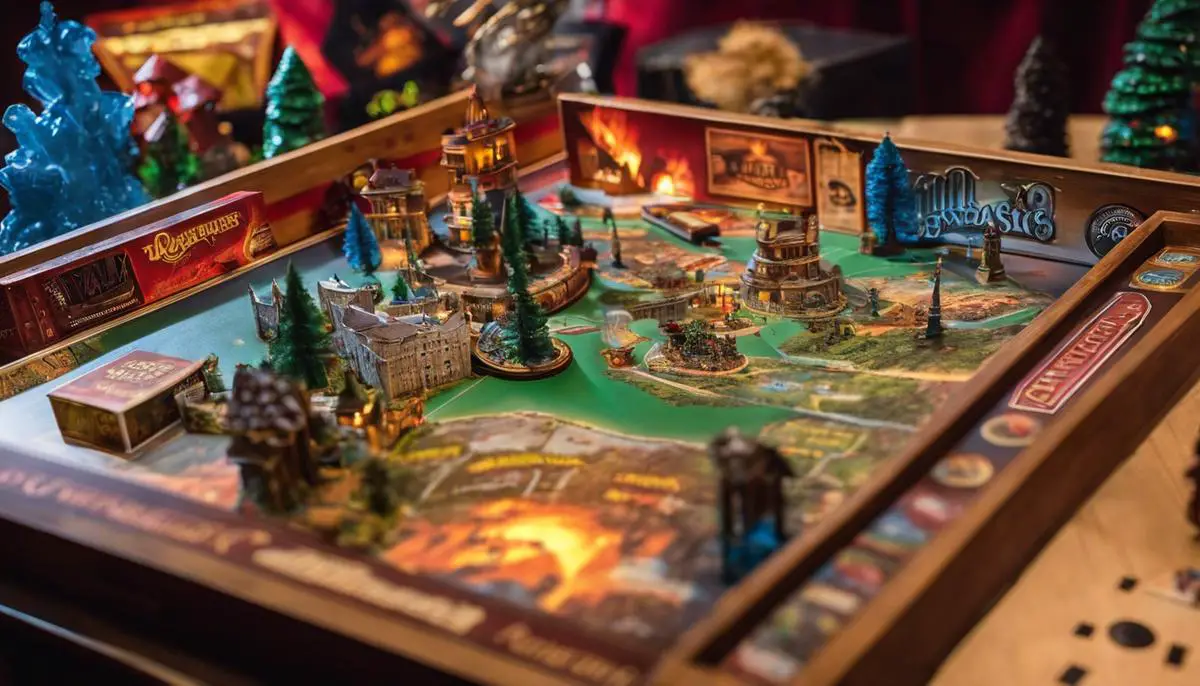As we peer into the vibrant world of the 90s, board games stand tall as an emblem of a time marked by simplistic pleasures, creativity, and family bonding. These tabletop games, with their colorful components, innovate gameplay, and engaging themes, dominated living rooms, fostering competition and camaraderie. Unfortunately, the turn of the century ushered in an era of digitalization that cast a shadow on these beloved gaming artifacts. This journey delves deep into the rise and fall of such forgotten 90s board games, shedding light on their ingenuity, influences, rebirth in contemporary society, and the joys of collecting these treasured keepsakes.
The Rise and Fall of 90s Board Games
“Rolling Along Memory Lane: The Rise and Fall of 90s Board Games”
Who doesn’t have fond memories of spending Saturday nights around a table, battling friends and family in board games? The 90s marked a golden era for this blossoming hobby. Popular games like “Catan,” “Magic: The Gathering,” and “Risk: Star Wars Edition” took the market by storm. But what factors played pivotal roles in their sudden popularity and eventual decline?
Firstly, let’s hoof it back to the advent of the ’90s, an era of radical innovation in tech and entertainment. The digital world was just budding — the internet was an exotic novelty, and smartphones were unheard of. Board games offered a tangible, intimate way to socialize, making them a hit with families and friend groups looking for quality time together.
The newfound focus on strategy and competition also significantly spurred the popularity of ’90s board games. Unlike their yesteryears counterparts, these games pushed players to employ tactics and diplomacy. This breathed fresh life into the playing experience, sparking immense interest among adults and teenagers.
One standout factor was the boom in pop culture-themed board games. There was something magical about rolling dice on a “Jurassic Park” board or playing detective in a “Clue” game replete with your favorite TV show characters. This successful mashup of board games with admired movies, TV series, and comic books created a delightful cocktail of nerd-dom, contributing significantly to their colossal appeal.
On the flip side, the late ’90s witnessed a seismic shift in the entertainment landscape. The surge of online gaming, video consoles, and advancements in computer graphics put a dent in the appeal of board games. The thrill of digital gaming with its superior graphics, increasingly sophisticated gameplay, and the added advantage of competing with players worldwide felt like a natural evolution, overshadowing the allure of table-top games.
Simultaneously, the economic recession looming at the end of the decade influenced the decline. Board games, while loved and enjoyed, are ultimately a luxury rather than a necessity. The rapidly inflating prices of board games didn’t match the tightening purse strings of consumers, slowly sidelining them into the realm of occasional indulgence rather than a regular pastime.
Interestingly, the social aspect of board games, once their driving force, unintentionally added to their downfall. With the hustle and bustle of the modern lifestyle and changing socializing patterns, orchestrating board game nights became increasingly untenable, leaving these interactive pastimes gathering dust on shelves.
Exploring the rise and fall of ’90s board games offers insight into the shifting trends in entertainment and consumer behavior. It’s fascinating to see how the changing pans of time shape and steer our pastimes. One can only wonder what the gaming landscape will morph into 10, 20, or 30 years from now!

Photo by jmvillejo on Unsplash
Analysis of Popular 90s Board Games
Stepping back into the 90s, board games were considered one of the prime sources of entertainment, bringing families and friends together over competitive strategy and endless fun. Deeper than the surface amusement, these analog entertainments embodied the cultural aspects of the decade they were born in, reflecting everything from the economy to emerging technology. Let’s deep dive into a collection of popular 90s board games and the uniqueness they offered.
Starting the list with “The Settlers of Catan,”
this board game is considered a gateway into modern board gaming. It first hit the market in 1995 and, what made it unique, was its incorporation of resource collection and trading elements. Players didn’t just compete against each other but cooperated, forcing interactions and challenging participants to strike savvy deals.
Next up, “Pokemon Master Trainer.”
This game was directly impacted by the colossal pop culture phenomenon that Pokemon was in the ’90s, clearly showing the influence of pop culture-themed board games. The game involved catching the Pokemon and gathering strength for the final face-off at Indigo Plateau, delivering the thrill of the Pokemon TV series and video games right at the gamer’s table.
Even in the face of growing digital alternatives, traditional games like “Scrabble” found ways to reinvent themselves. “Scrabble Deluxe” introduced a turntable and raised grid to keep the letters in place, providing a better gaming experience. Proving that, even in a increasingly digital era, traditional games could compete by enhancing their features and functionality.
The 90s also witnessed the birth of “Star Wars: The Interactive Video Board Game.” A game fully capitalizing on the dawn of multimedia and Star Wars fandom. With its VHS additive that played alongside the game, this board game was a telling sign of how technology was starting to influence this traditional domain.
Continuing our timeline, we have the economic recession-friendly game “Payday.” While not initially a 90s product, its popularity throughout the decade reflected the economic consciousness of the time. Through the game, players learned to manage their finances, pay bills, deal with loans, and save for the ‘payday,’ subtly educating them on economic realities.
Lastly, “Cranium” was a revolutionary game, steering away from the typical one-genre board game mold. It combined elements from numerous other popular games into one swift gameplay, thereby attracting a wide range of players and opening up the game to a larger audience.
In conclusion, board games from the ’90s were not just mere pastime commodities but a reflection of the society, culture, and technological innovation of the time. Each game, in addition to providing entertainment, gave its unique take on strategy, competition, pop culture, economics, and technology, serving as markers to a remarkable decade.
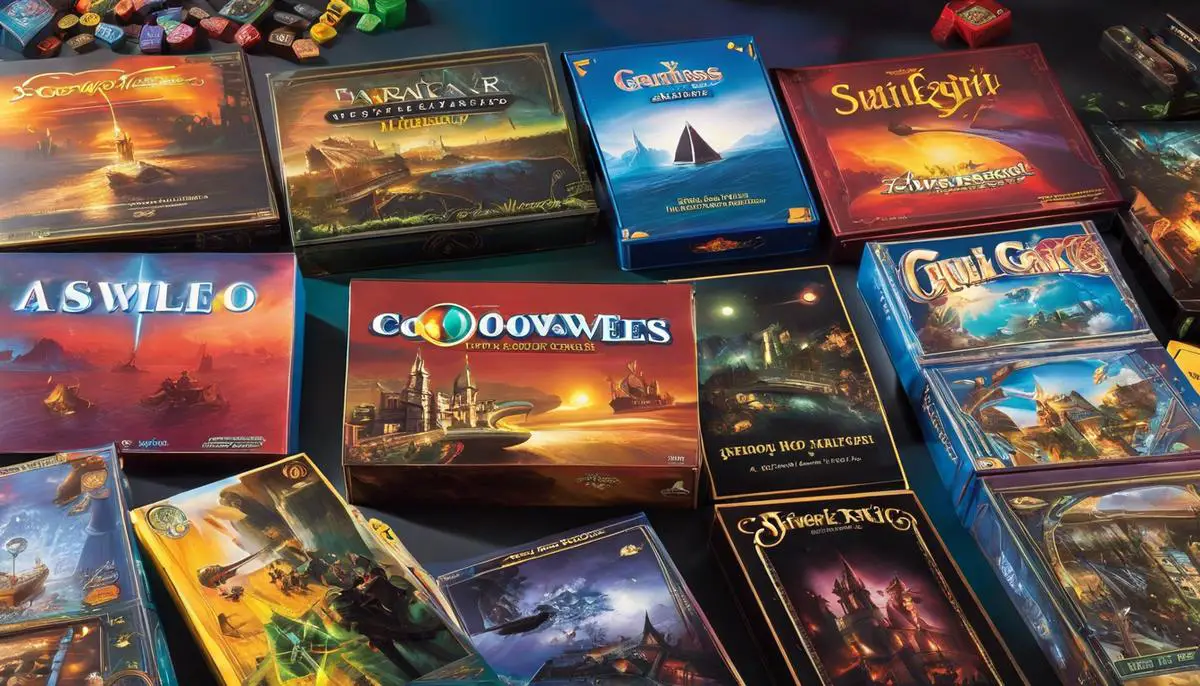
The Impact and Influence of Forgotten 90s Board Games
Despite the shift towards digital entertainment in the 90s, the fond memory of gathering around a tabletop for a game night persisted, reinforcing the longevity of traditional board games. Many games released in this period have since become forgotten treasures, but their influence continues to shape modern tabletop gaming in significant ways.
Forgotten 90s board games often broke ground by incorporating innovative mechanics, now considered staples in contemporary board game design. For instance, player interaction was revolutionized by games like “The Settlers of Catan”. Catan encouraged players to negotiate and trade rather than compete directly against each other, a concept that reverberates in modern games like “Ticket to Ride” and “Carcassonne”. These games continue to emphasize strategic bargaining, showing a direct lineage to the influence of Catan.
Moreover, games like “Pokemon Master Trainer” brought collectability and character development into tabletop gaming. Such games allowed players to gather Pokemon of various strengths and types to gain an advantage over opponents, a mechanic that led to the popularity of more recent games like “Mice and Mystics” and “Gloomhaven”. The emphasis on character progression and collection tapped into our human instinct to gather and progress, adding another layer of satisfaction to the tabletop experience.
Then there were games like “Scrabble Deluxe” and “Cranium” that pushed the boundaries of educational play. Not only were these games fun, but they also challenged your vocabulary and creativity. Today’s educational games such as “Codenames” and “Spyfall”, owe much to this 90s movement towards engaging entertainment that also tested the mind.
Furthermore, licensing began to play a significant role in 90s board game design, thanks to games like the “Star Wars: The Interactive Video Board Game”. The name of a cinematic franchise on the box often ensured high sales, a tactic that modern games often utilize. Just consider the myriad of board games based on popular franchises like “Marvel”, “Game of Thrones”, and “Harry Potter”.
Last but not least, economic simulation games like “Payday” where players earned and spent money according to the roll of the dice, gave rise to the current generation of fiscal-centric games such as “Power Grid” and “Monopoly: Ultimate Banking”.
Despite being relegated to the back of the closet, these 90s games brought forth a multitude of innovative ideas still prevalent in today’s tabletop market. They challenged preconceived notions of what a board game could be, opening up new avenues of gameplay and design. These forgotten games of the past have thus left an enduring legacy shaping the present and undoubtedly the future of tabletop gaming, keeping the spirit of camaraderie, competition, and imagination alive across generations.
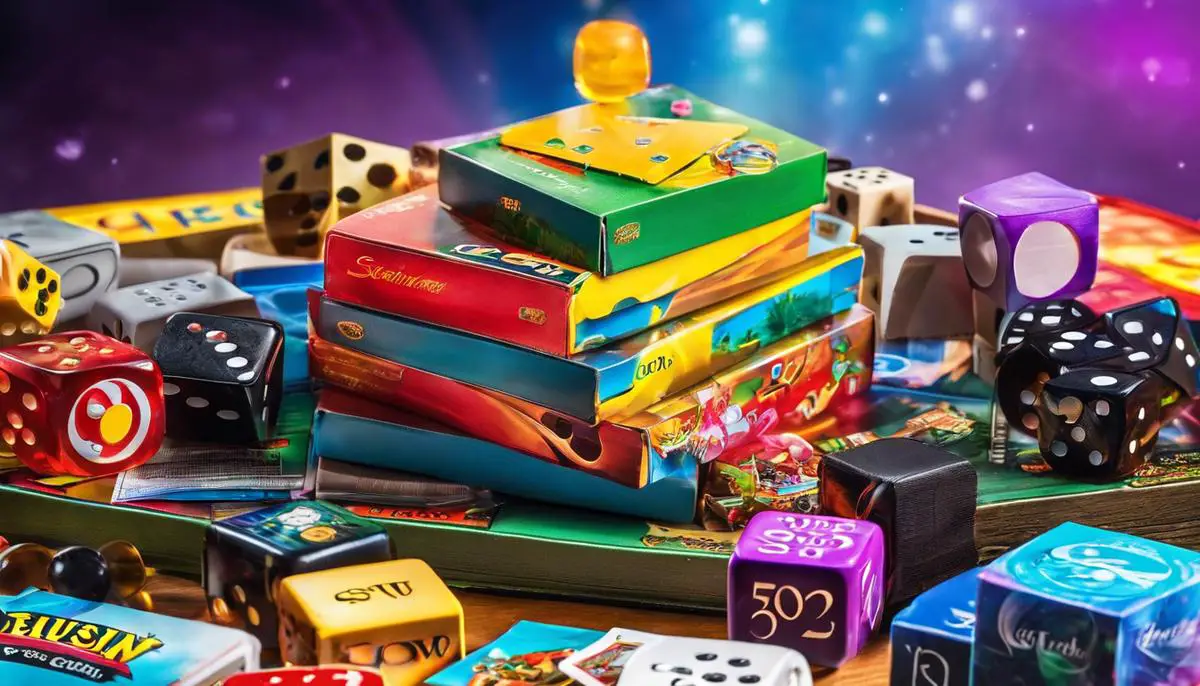
Revival and Modern Adaptations of 90s Board Games
Board games have always held a special place in our hearts. From the nail-biting anticipation of strategically placing your last ship in Battleship, to the triumphant cheer of “king me” in Checkers, these games manage to create an engaging and interactive experience that digital games often struggle to replicate. This is especially true for 90s board games, whose charm and innovative designs captivated players worldwide.
Many of these games had distinctive concepts and mechanics which have since been forgotten, giving them a form of retro appeal today. A handful of these 90s treasures were so ground-breaking that they have been rebooted for the modern-day tabletop gaming community. One such game is “HeroQuest”, a treasure hunting adventure game which was brought back to life with an impressive design upgrade and revised rules, while maintaining the essence of its original gameplay.
“The Omega Virus” is another gem from the 90s, renowned for its distinctive electronic voice that used to taunt players throughout the game. In an exciting turn of events, Restoration Games has expressed interest in reviving this classic who-done-it mystery game for today’s audience.
While it’s clear that 90s board games have influenced the mechanics and gameplay of many modern day games, they have also directly inspired their aesthetics. Take for instance the game “Mall Madness”, which recently got a makeover. The new edition sports updated graphics and includes a modern-day shopping list, while retaining the original’s racing-to-the-checkout gameplay.
Further, some games from the 90s have spun out into mobile versions, such as “Who Wants to Be a Millionaire?”. Initially a popular television show-themed board game, where players gave answers to multiple choice questions in the hopes of hitting a million, it continues to enjoy mass appeal as a mobile game today.
Similarly, the wildly popular “Magic: The Gathering” has not only survived but thrived through its transformation to a digital platform targeted at today’s tech-savvy audience.
In conclusion, it’s heartening to see how the spirit of 90s board games has been revived and reimagined for the modern day. Through updated designs, innovative spin-offs, or simply by sticking to their original appeal, these games continue to impress and engage new generations of audiences.
Remember, in the world of gaming, whether it’s on a tabletop or a smartphone screen, the goal remains the same – to immerse players in a world that’s both fun and challenging. It’s this shared love for gaming that keeps the legacy of 90s board games alive, making it an exciting prospect for what the future of board games hold.
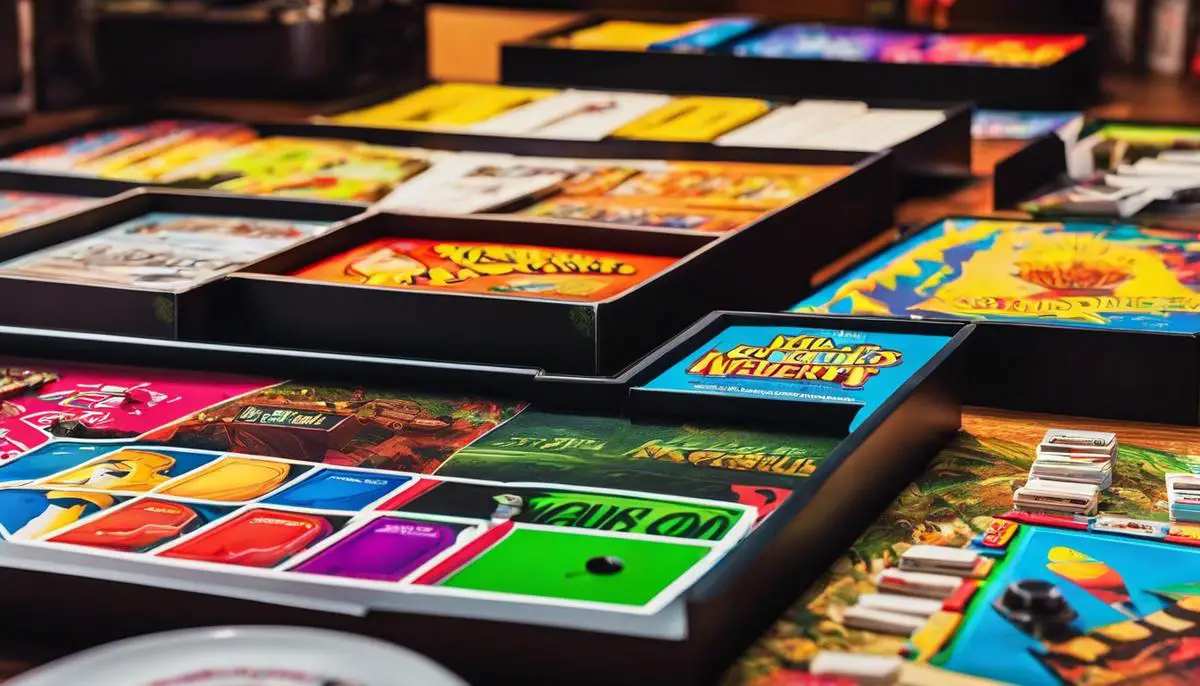
Collecting and Preserving 90s Board Games
Discovering, collecting, and preserving classic 90s board games can be an exciting venture. The first step to amassing your collection is deciding which games to target. Look for games that have stood the test of time such as The Settlers of Catan or Pokemon Master Trainer or seek out games that hold a personal nostalgic appeal.
Once you’ve established your hit list, rummage sales and thrift stores often offer these classic gems at a fraction of their original cost. Scan the board game wire racks and you might just be lucky to walk away with a copy of Scrabble Deluxe or Star Wars: The Interactive Video Board Game.
Online avenues also prove to be invaluable in this search for classic board games. Websites like eBay and Amazon include a wealth of offers from both professional sellers and average people getting rid of old stuff. Always remember to check the condition of the game to ensure all pieces and instructions are intact. For pinched purse strings, online classifieds like Craigslist or even social media marketplace platforms can turn up surprising results too.
Game conventions provide an extensive range of board games from across the decades, including 90s classics like Payday or Cranium. Devoted gamers often assemble substantial collections and are more than willing to trade or sell to other enthusiasts.
Preserving these classic 90s board games once collected is equally critical. Store them in dry, cool places and away from direct sunlight, which can fade the packaging and game components. Acid-free boxes and comic book sleeves also provide additional protection, extending the life and quality of the games.
However, not just the physical aspect needs to be preserved but the gameplay as well. An effort should be made to truly understand and appreciate the innovative mechanics introduced by these 90s games. Often they offered unique player interaction and negotiation experiences that were trendsetters in their time.
More importantly, take time to play the games regularly as many were designed to be robust and withstand regular use. It’s the best way to appreciate these classic 90s board games, immersing one’s self in the fun and challenging gaming experience they set out to provide. It’s a respectful tribute to the enduring legacy of these 90s board games, a nostalgic nod to the past while enjoying the present.
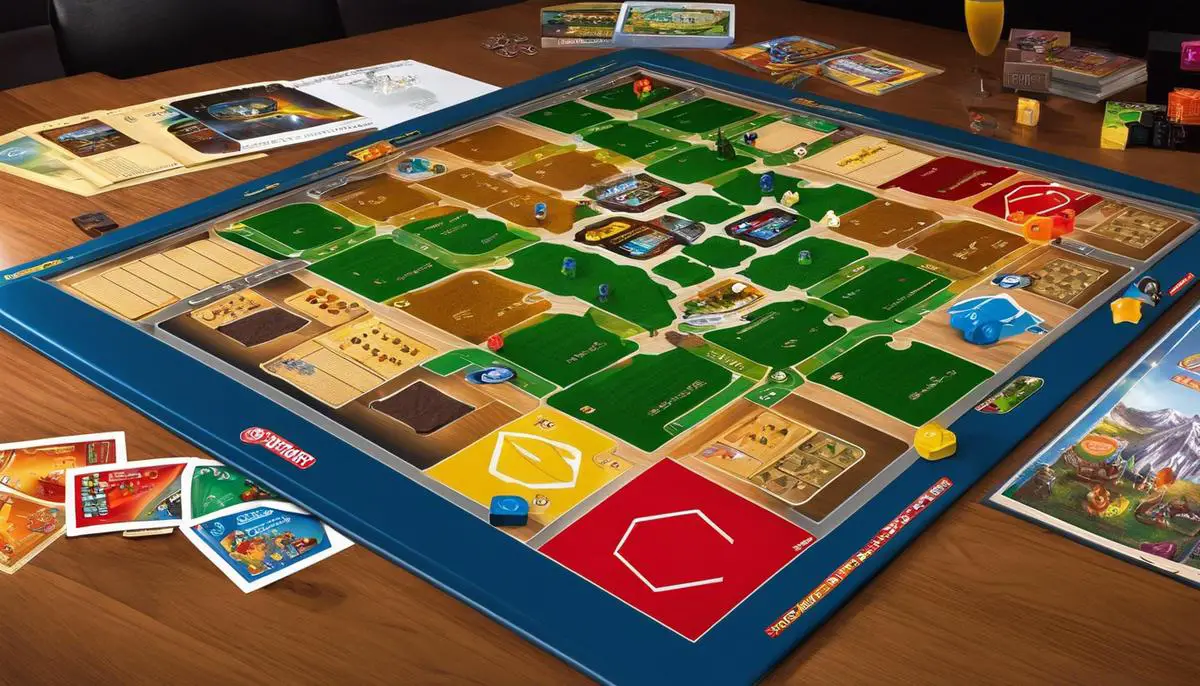
The ever-evolving world of board games paints a colorful tapestry of innovative design and dynamic storytelling. As we looked back at the golden era of the 90s, we’ve found that these games aren’t merely relics of the past but have left an indelible mark on the gaming industry and continue to inspire and thrill gamers today in their modern manifestations. For hobbyists, these vintage items hold a sense of nostalgia, a worthy collection that serves as both a pastime and a preservation of this compelling part of tabletop gaming history. Thus, every forgotten 90s board game, with its riveting tales and exciting mechanics, deserves to be cherished and celebrated.
